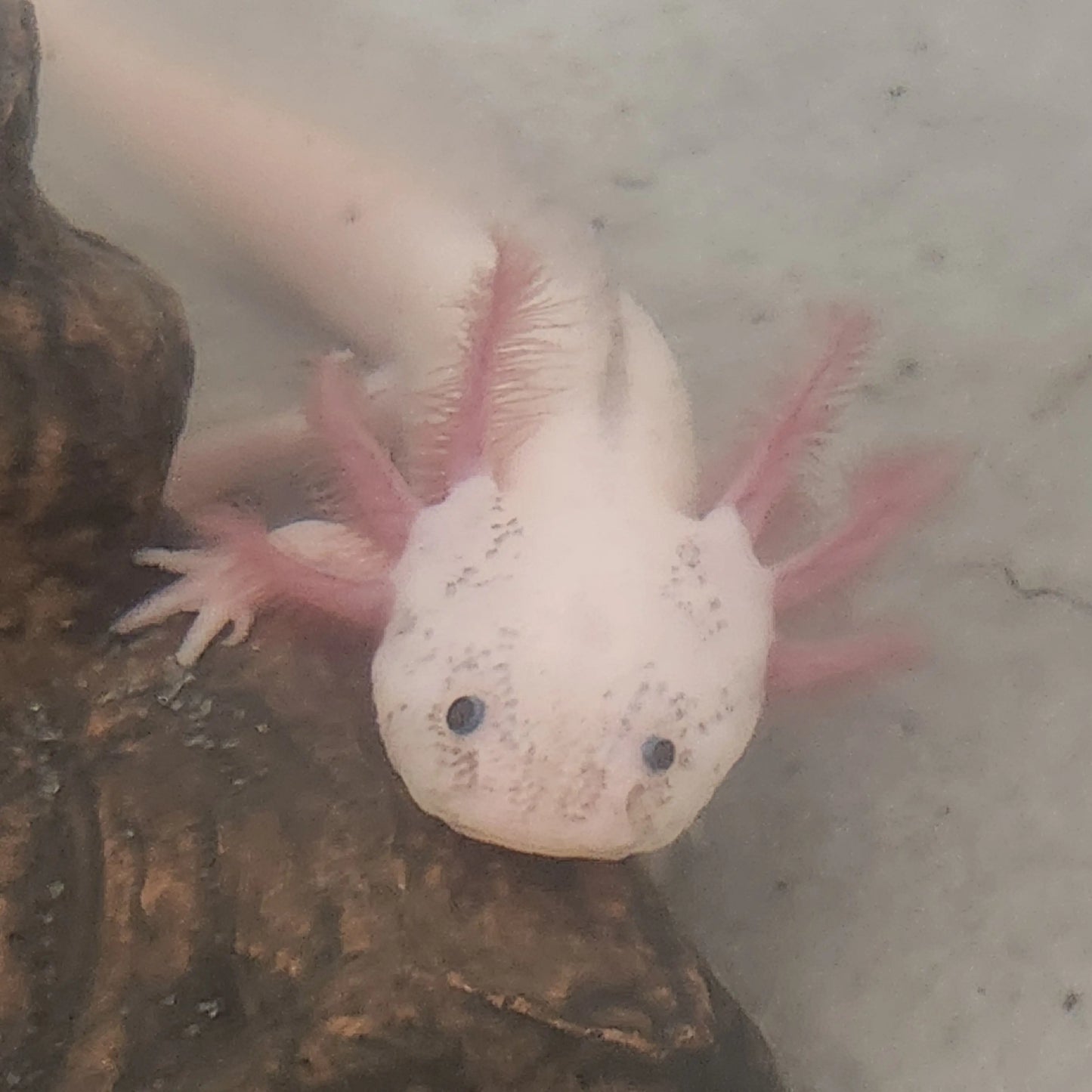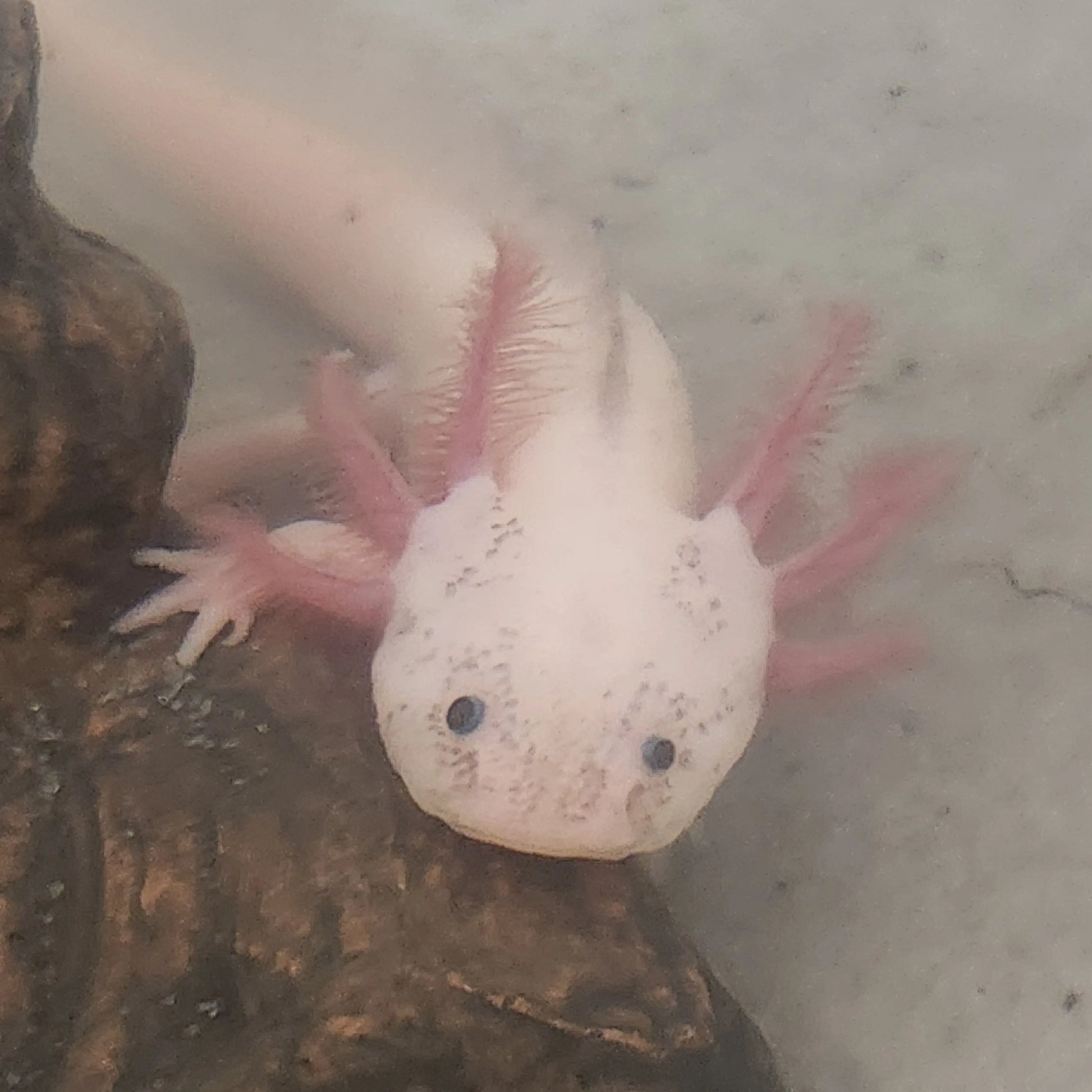Dirty Masked Lucy Axolotl – Unique Exotic Aquatic Salamander
Dirty Masked Lucy Axolotl – Unique Exotic Aquatic Salamander
Low stock: 2 left
Couldn't load pickup availability
🦎 Dirty Masked Lucy Axolotl – Unique Exotic Aquatic Salamander
📖 Overview The Dirty Masked Lucy Axolotl (Ambystoma mexicanum) is a rare and captivating leucistic morph, distinguished by its pale body, dark eyes, and unique speckling or “mask” across the face and head. This exotic variety is a favorite among axolotl keepers for its distinctive look, hardy nature, and fascinating external gills.
Perfect for species-only cold-water aquariums, the Dirty Masked Lucy grows up to 12 inches and makes a true centerpiece pet.
We do not ship to the following states:
- California
- Maine
- New Jersey
- Washington, D.C.
🌟 Key Features
- ✅ Striking Morph: Pale leucistic body with dark “mask” speckling on the face
- ✅ Exotic & Rare: Unique variety of Ambystoma mexicanum
- ✅ Beginner-Friendly: Hardy, calm, and low-maintenance
- ✅ Cold-Water Species: Thrives in 60–68°F aquariums
- ✅ Large Size: Grows up to 12 inches, ideal for spacious setups
📐 Care Quick Facts
- Scientific Name: Ambystoma mexicanum
- Morph: Dirty Masked Lucy (Leucistic with speckled markings)
- Size: 9–12 inches
- Lifespan: 10–15 years
- Tank Size: 20+ gallons (per adult)
- Water Temperature: 60–68°F
- pH Range: 6.5–8.0
- Temperament: Calm, best in species-only tanks
- Diet: Axolotl pellets, earthworms, bloodworms, frozen/live proteins
❓ FAQ
Q: What is a Dirty Masked Lucy Axolotl?
A: A leucistic axolotl morph with a pale body and unique speckling or “mask” across the face.
Q: Are they beginner-friendly?
A: Yes, axolotls are hardy, adaptable, and excellent for aquarists new to exotic amphibians.
Q: What water do they need?
A: Clean, cool water (60–68°F) with gentle filtration and stable parameters.
Q: What should I feed them?
A: Worms, axolotl pellets, bloodworms, and occasional frozen/live protein.
Q: Can they live with fish?
A: No, they should be kept in species-only aquariums to prevent stress or injury.
Q: How large do they grow?
A: Typically 9–12 inches as adults.

